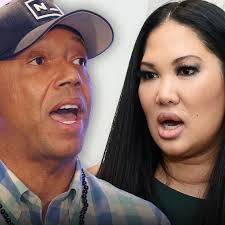When Taylor Swift made what might be the most significant purchase of her life, it wasn’t a glamorous mansion, a private island, or a rare piece of art. It wasn’t even something tangible. It was the right to something she had created years ago — her own music.
For years, Swift has been locked in a high-profile battle over the rights to the master recordings of her first six albums. These aren’t just tracks on a record — they’re pieces of her life. From the aching heartbreak of Red to the fairytale dreams of Fearless, each album was a chapter in the story of her becoming. Losing ownership of them to music executive Scooter Braun in 2019 wasn’t just a professional setback — it was a deeply personal wound.
Fast-forward to today: after re-recording her albums, rebuilding her brand, and reigniting conversations about artist rights, Taylor Swift now owns the original masters to her early music. She bought them back through a deal with Shamrock Capital, who had purchased them from Braun’s Ithaca Holdings. Though the price tag hasn’t been confirmed, estimates say it could be as high as $360 million.
And for Swift? Worth every penny.
To understand the weight of this moment, you have to look back at how we got here.
In 2019, Braun’s company acquired Big Machine Label Group — the label that had signed Swift as a teenager. That deal included the master recordings for Swift’s first six studio albums. The problem? Swift wasn’t informed about the purchase until it was done, and she’s long had a contentious relationship with Braun. She publicly accused him of years of manipulative behavior and stated that having him own her music felt like a betrayal.
Many fans — Swifties and casual listeners alike — were stunned to learn that such a massive artist didn’t own her own work. But in the music industry, that’s standard. Record labels often retain ownership of masters, while artists are paid royalties. The problem is, that system can limit an artist’s control over how their work is used, distributed, and licensed. In Swift’s case, it meant she had little to no say in what happened to the most important part of her career.
Swift didn’t stay quiet. Instead, she launched a daring campaign to reclaim her art — by re-recording all six albums and re-releasing them as Taylor’s Version.
At first, the idea seemed unprecedented. Why would fans listen to the new versions when the originals were already beloved classics?
But Swift’s re-recordings weren’t just nostalgia-fueled remakes. They were statements of defiance, love letters to her past self, and gifts to her fans. With each “Taylor’s Version” release — Fearless, Red, Speak Now, and so on — she added previously unreleased “From the Vault” tracks, updated production, and subtle lyrical tweaks. She turned a business decision into an artistic renaissance.
The public responded with overwhelming support. Swift’s re-recordings topped charts, broke streaming records, and further solidified her status as one of the most powerful musicians in the world. But more than that, they proved that an artist’s voice — literal and metaphorical — can still win against the machinery of an industry.
In late 2024, Swift quietly closed the loop on this saga. Through a deal with Shamrock Capital, she secured the master recordings that had once been Braun’s. She shared the news with fans in a heartfelt letter posted on her website, calling it her “greatest dream come true.”
“To say this is my greatest dream come true is actually being pretty reserved about it,” she wrote. “I will be forever grateful to everyone at Shamrock Capital for being the first people to ever offer this to me.”
She went on to describe how the firm had handled the deal with “honesty, fairness, and respect,” something she clearly felt had been lacking in her previous dealings with Braun. “This was a business deal to them, but I really felt like they saw it for what it was to me: My memories and my sweat and my handwriting and my decades of dreams.”

It was a poetic end to a long battle. For Swift, this wasn’t about business. It was about emotional closure, creative control, and justice.
There’s a question many have asked in light of this headline: why would someone spend hundreds of millions of dollars on something they already created?
To outsiders, it might seem redundant. But for Swift — and for many creators — the idea of someone else owning your life’s work is gut-wrenching. It’s like writing a novel only to be told you can’t decide who reads it, how it’s distributed, or what gets adapted into a movie.
This purchase was Swift buying back her power.
Financial experts agree that while the move was emotional, it was also incredibly strategic. Kristen Kelly, co-founder of The Wall Street Skinny, explained: “Her whole business, her whole everything is her brand. … This was just such an important strategic decision for her overall. Honestly, even if she had to pay more, I think it was probably still the right move strategically.”
Owning her masters strengthens her grip on her narrative, her legacy, and her bottom line. Every time one of her songs is used in a film, streamed on a platform, or covered by another artist, Swift now controls what happens and profits more directly from it.
Sure, most of us aren’t making $360 million business deals. Most of us aren’t navigating the politics of the music industry. But Swift’s journey raises a more universal question: When is it worth spending big on something that gives you peace of mind?
Melissa Cox, a certified financial planner, puts it plainly: “What she did was buying back her power, which is extremely emotional, especially for women, but it’s so empowering that you’re getting control of your own destiny back.”
It’s a lesson many can relate to, in smaller ways. Maybe it’s spending money to start your own business, to buy back a family home, to go back to school, or to preserve something that means everything to you. Not every decision has to make sense on a spreadsheet. Sometimes, emotional fulfillment is the best return on investment.
Swift’s deal also sends a powerful message to the industry: artists deserve control over their work.
Historically, the music industry has leaned heavily toward the corporations, not the creators. Young artists sign away their rights in exchange for the promise of exposure, only to find themselves powerless later. Swift’s story has helped pull back the curtain on these practices, and in doing so, has inspired others to demand more.
Monica Dwyer, another certified financial planner, said it best: “She’s opened the eyes of other music artists as well, and, because she’s doing that, she’s kind of pushing back on the industry. It kind of feels like the industry is more powerful than the individual.”
But now? Swift has shifted that narrative. Her success shows that an individual — with talent, determination, and an army of loyal fans — can push back and win.

In the end, Swift didn’t just buy back her music. She reclaimed her story. In doing so, she has not only changed her own life but possibly reshaped the way artists view ownership, legacy, and creative freedom.
The $360 million figure, while staggering, is secondary to the emotional and cultural value of the deal. Swift has proven that sometimes, the most meaningful purchases aren’t about luxury or status — they’re about soul.
She wrote those songs. She lived those moments. She deserves to own them.
And now, she does.
Whether you’re a Swiftie or not, her story holds lessons for everyone:
- Fight for what’s yours — Even when the odds are stacked against you.
- Know your worth — Emotionally, creatively, and financially.
- Invest in what matters — Not just for profit, but for peace.
Taylor Swift turned a painful chapter into a powerful legacy. And in the process, she didn’t just reclaim her music — she reclaimed herself.
That’s not just a victory. That’s a revolution.



